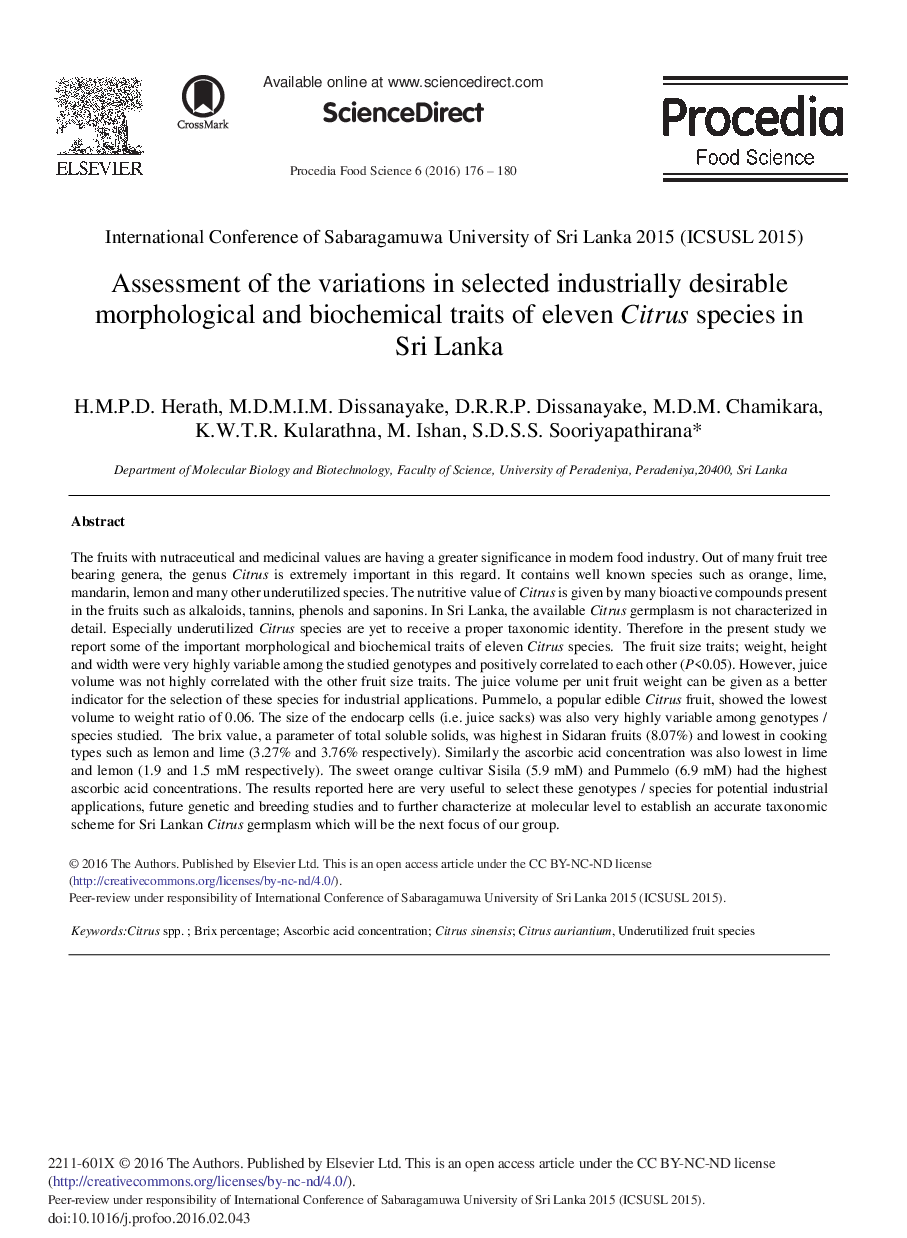| Article ID | Journal | Published Year | Pages | File Type |
|---|---|---|---|---|
| 1266200 | Procedia Food Science | 2016 | 5 Pages |
The fruits with nutraceutical and medicinal values are having a greater significance in modern food industry. Out of many fruit tree bearing genera, the genus Citrus is extremely important in this regard. It contains well known species such as orange, lime, mandarin, lemon and many other underutilized species. The nutritive value of Citrus is given by many bioactive compounds present in the fruits such as alkaloids, tannins, phenols and saponins. In Sri Lanka, the available Citrus germplasm is not characterized in detail. Especially underutilized Citrus species are yet to receive a proper taxonomic identity. Therefore in the present study we report some of the important morphological and biochemical traits of eleven Citrus species. The fruit size traits; weight, height and width were very highly variable among the studied genotypes and positively correlated to each other (P<0.05). However, juice volume was not highly correlated with the other fruit size traits. The juice volume per unit fruit weight can be given as a better indicator for the selection of these species for industrial applications. Pummelo, a popular edible Citrus fruit, showed the lowest volume to weight ratio of 0.06. The size of the endocarp cells (i.e. juice sacks) was also very highly variable among genotypes / species studied. The brix value, a parameter of total soluble solids, was highest in Sidaran fruits (8.07%) and lowest in cooking types such as lemon and lime (3.27% and 3.76% respectively). Similarly the ascorbic acid concentration was also lowest in lime and lemon (1.9 and 1.5 mM respectively). The sweet orange cultivar Sisila (5.9 mM) and Pummelo (6.9 mM) had the highest ascorbic acid concentrations. The results reported here are very useful to select these genotypes / species for potential industrial applications, future genetic and breeding studies and to further characterize at molecular level to establish an accurate taxonomic scheme for Sri Lankan Citrus germplasm which will be the next focus of our group.
